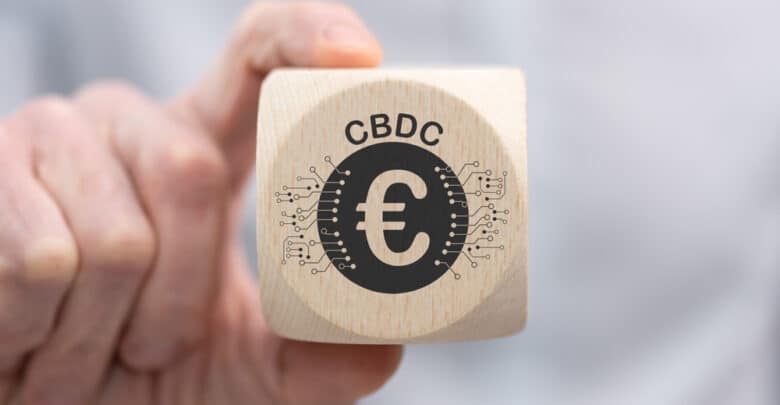
In the following article, we will be taking a closer look into the various aspects of the proposed Digital Euro. Being investigated for their possible circulation by the European Central Bank (ECB), it has a lot of interesting factors to be considered when it comes to picturing its impact on the European Union and possibly the world.
Introduction
It was only a few decades ago that the world saw its first actual online transaction taking place between two friends who sold one a CD to the other. The two were separated physically and it was a transaction, first of its kind. It was not easy making sure the payment credentials transferred between two parties on the Internet will be securely dealt with and not hacked or misused, however, with help from PGP Encryptions and the technical effort of Dan Kohn, Phil Brandenburger was charged $12.98 for a CD in the Year 1994.
It was the first time the world saw payments being done virtually and securely online. Little did Dan and Phil know, the very trend they set off would take the world by charge in the coming years. Payments have come a long way since then, and with the further advent of cryptocurrencies such as Bitcoin, we now have decentralized means of payment as well.
Commerce, especially payments as we knew them, changed. They changed from being tangible, to virtual.
They changed from being restricted to only being exchanged via physical meetings to being seamlessly transferred to many across multiple corners of the world through simple taps of fingertips. As the world made the first jump from physical banknotes to virtual banknotes, people felt at ease as their transactions got easier and much quicker. So it was only inevitable that banks, such as the European Central Bank in this case, started to think about their very own digital currency as well.
What exactly is Digital Euro?
And so, here we are. July 2021, The European Central Bank gives permission to begin an investigation phase for an euro, beyond physical touch;. A Digital Euro. Now, a digital currency issued by any bank is considered as a separate instrument and hence is given a separate defining acronym: CBDC, which stands for “Central Bank Digital Currency”. In the past, the central banks used to only give out Central Bank Digital Currencies to banks with a central bank account.
However, things started to change when banks such as De Nederlandsche Bank (DNB) contacted the European Central Bank for allowing the wider public to gain access to the digital currency and hence, enjoy the potential benefits it may offer.
Bear in mind, the euro is the one single currency holding the 27-nation strong European Union together. Any changes, for better or worse, are capable of reaching and influencing the lives of millions. So obviously it would make sense that the European Central Bank decided to give it a fair period of testing to see its viability.
Note the usage of the word “viability” here, because that is exactly what is going on. The European Central Bank has not entirely confirmed that they will be rolling out a digital version of the euro everybody is so familiar with in just banknotes and coins. However it has, in official statements, indicated that it wants to get ready for a possible roll-out of a digitized version of the euro. Now while there may be several factors that are leading the European Central Bank to make such a change, we can take a look at a few of them to get a better grip of the bigger picture of some of the strong forces at play here.
Why Digital Euro and why now?
One of the key driving forces for the European Central Bank looking into the digital side of things for their euro may be the very state of the world as it stands today. Looking around us, everything is virtual. As stated earlier, the rise of cryptocurrencies have opened a completely different area of opportunities for everyone.
From being able to hold transactions anonymously and securely to becoming financial instruments fit for trading, cryptocurrencies have had a huge impact on the way we conduct our day-to-day transactions and perhaps, this is why the European Central Bank is so interested in its very own digitized euro.
The one infamous quality of many cryptocurrencies, including but not limited to, bitcoin is the anonymity they allow users to hold as they transfer money across multiple parties. Any user can make a wallet and can receive or send money without revealing any particular information about their identity.
This is a problem in the eyes of the government and other relevant authorities since it becomes very difficult to track where and to whom a particular country’s money is going. In other words, cryptocurrency makes money laundering very easy. So much so, it has a complete term for its own; crypto laundering.
Now in many countries, there are measures being put in place in order to prevent crypto-laundering from happening. These include most crypto exchanges, firms which allow you to convert your cryptocurrencies into fiat currency, using sophisticated rules to entrap suspicious transactions. These include but are not limited to “Anti Money Laundering” (AML) and “Know Your Customer” (KYC). Now the reason why these problems arise in the first place is the reason the European Central Bank is proposing a digitized currency of its own; decentralization.
Cryptocurrencies such as Bitcoin, are relied upon and cheered by many because they are decentralized. Decentralization in this context means the currency is not being controlled by any single entity or authority. It means it is outside the control of the banks. This is in contrast to fiat currencies which are controlled and overlooked by a particular country’s state banks. As other digital currencies such as many cryptocurrencies are decentralized, they go outside the supervision of banks in terms of transactions and hence increase chances of money being laundered out of a country.
A country needs to ensure it’s money is not being laundered out of its economic ecosystem for a number of reasons. Money Laundry, due to its nature, implies that the origin of the money is ill and hence, needs to be hidden from the government. When it is done within a country, it can give rise to organized crime as it sustains their existence and gives incentives for more of their illicit actions. On the other hand, if a lot of the country’s money is turned into crypto and hence transferred to off-shore accounts, it may result in unpredictable differences in the demand of money itself and may drive inflation.
Thus, in order to avoid such harmful effects of money-laundering which is facilitated via the currently existing digital currencies, the European Central Bank may look towards a digital euro which is monitored by the bank itself. This ensures a good-eye on transactions happening, in effect, in the whole of the 27 countries the Euro is officially adopted in and possibly even beyond.
However, the privacy point of the proposed digital euro is something that needs a bit more clarification. The very first report by the European Central Bank concluded that the objective of the Eurosystem with regards to a digitized version of the euro would be the stability of the currency, integrity, security –and in keeping with the software nature of the currency; confidentiality.
But many expect there to be a trade-off of some sort. As the digital euro would be supervised by an authority, most likely to be the ECB in this case, there are high possibilities that all transactions will be monitored. What may be an advantage for some, may be a bad news for others.
Fabio Panetta –a member of the executive board of the European Central Bank who argued in favor of the digital euro. He was quoted in the Financial Times as saying that the team has “tested the possibility of running a digital euro with a centralised system, a decentralised one, a mixture of the two and with offline payments”. This allows for us to really see the intentions of the Central Bank behind this venture, not all, but some intentions for sure.
The European Central Bank could be seen as wanting to make the Digital Euro a financial instrument that aids the already existing process of euro exchanges in consumers’ lives.This is especially highlighted where Fabio Panetta’s statements read “offline payments” as offline availability of a digital euro is bound to increase accessibility.
It can be predicted that the European Central Bank is looking at the Digital Euro as the solution which allows for other structures associated with payments to improve and modernize. For example, we can expect any deli down a street in Italy to accept a paper crisp euro note but when it comes to accepting digital payments… we might want to narrow down our list. Despite wide adoption, acceptance of digital currencies still has room to improve and the European Central Bank’s decision to adopt a digital version of the Euro may very well accelerate that change.
However, not all strides towards the digital euro are fueled by looking only at the way things are carried out in Europe. Some reports suggest that the European Central Bank is taking a special interest in issuing their own Central Bank Digital Currency after looking at how they have gained momentum in other countries as well. Take China for example, who has been working on its digital Yuan and finally launched it in April of 2021.
China has by far been the strongest economic power to adopt the use of a digital version of its currency issued by its central bank as of right now. Seeing how well a country’s currency can be etched into the online economic ecosystem as seen in China, Europe too may feel its quest for a digital euro is justified in its cause.
A threat to the very own financial stability of the euro is also something that the European Central Bank is concerned about. In reports released in June 2021 titled “The International Role of the Euro”, there were concerns shared that seemed as though they were meant to alarm the people concerned. In the report, one major warning laid out was how desperately does Europe need to realize the need to adopt a digital currency, or a CBDC to be exact in order to ensure financial stability.
The Digital landscape of currencies is seeing some major shifts that are alarming many governments around the world. One of them being Europe. Take Facebook for example, formerly initiated as Libra but now called Diem; Diem is the first cryptocurrency proposed to be offered by any social media giant to such a scale. While Diem on its website states it targets all people, including the 1.7 billion people who are unbanked, it seems like Diem may turn into quite a powerful and versatile payment method for all people since that is Diem’s target audience.
Seeing Diem having a clear shot at being adopted by many, this could mean it may become the main means of transferring money for people, whether within or across borders. This is exactly where the problem starts for the European Central Bank which fears the rise of social media giants in the domain of digital currencies. They find “foreign tech giants” a threat to the financial stability as such digital currencies could dominate the way people carry out their transactions both domestically and internationally.
Hence, in order to have a better shot against such cryptocurrencies laid on the table by “foreign tech giants”, the European Central Bank proposes a player of theirs in the digital domain as well.
The same report referred to above also laid down a few other sets of warnings which stated that private digital currencies could cause the financial stability to fall to such an extent that “individuals and merchants alike would be vulnerable to a small number of dominant providers with strong market power.” The aforementioned quote is one given by the President of the European Central Bank, Christine Lagarde.
Moreover, another cause of concern the ECB sees in its lack of a digital currency has to do with the bank’s monetary policy mandate. The European Central Bank is supposed to play the role of a lender of the last resort. By not having a currency in the digital domain, the bank is not able to play that very role particularly to the best of it’s possibility and hence, this is another one of the supporting reasons the European Central Bank cites in its reports for its investigation of the Digital Euro.
How will it work?
Coming to the specifics of how the European Central Bank is predicted to launch it’s long-awaited and surrounded-in-anxiety form of digital currency, we have a few key pointers we can use to formulate an approximate picture of what we can expect.
The Digital Euro is likely to fit into the lives of normal citizens, which will in effect, be its end consumers, in a way they are already used to. This will provide a better and more risk-free user experience ensuring that the end consumers using the digital euro do so with ease. It is expected to be operable via the simple means of what would be similar to an online banking account –or to compare it to it’s cryptocurrency rivals, an online wallet.
Another likely possibility that seems to be expected by others is that the online bank account or wallet which will be used for the storage of digital euros will be provided and held at the European Central Bank only. It does not involve any third-party financial institution, in terms of where the account is held at least. As the account is held only at the ECB, it increases the security of the digital euro as the European Central Bank can never run out of euros as it is the issuer.
Due to this immense feeling of security associated with the digital euro, it is very possible that it may cause masses to opt dominantly for digital euro. This may cause other financial institutions to see a decline in how much people they cater to. It is likely the ECB expects this and hence would plan to set a limit on how many digital euros a person can own. By doing this, it will ensure people do not make the physical form of euros obsolete.
Along with a limit on how many euros can be bought, the European Central Bank is looking towards other measures which ensure the safety of other financial institutions. The ECB is also expected to allow other financial institutions to issue wallets or online accounts on the ECB’s behalf.
Conclusion
To conclude, the digital euro could be described as the next step in Europe’s strides towards innovating its economy as well as the daily lives of people. It intends to change things for the better in the macro and the micro. As we have read in this article, The ECB is currently in its investigation phase which is likely to end 24 months from the July of 2021. During these months, we will receive more information regarding developments which will help us form a clearer idea as to what it’s impact would be for the EU and possibly beyond.
Tokenhell produces content exposure for over 5,000 crypto companies and you can be one of them too! Contact at info@tokenhell.com if you have any questions. Cryptocurrencies are highly volatile, conduct your own research before making any investment decisions. Some of the posts on this website are guest posts or paid posts that are not written by Tokenhell authors (namely Crypto Cable , Sponsored Articles and Press Release content) and the views expressed in these types of posts do not reflect the views of this website. Tokenhell is not responsible for the content, accuracy, quality, advertising, products or any other content or banners (ad space) posted on the site. Read full terms and conditions / disclaimer.







